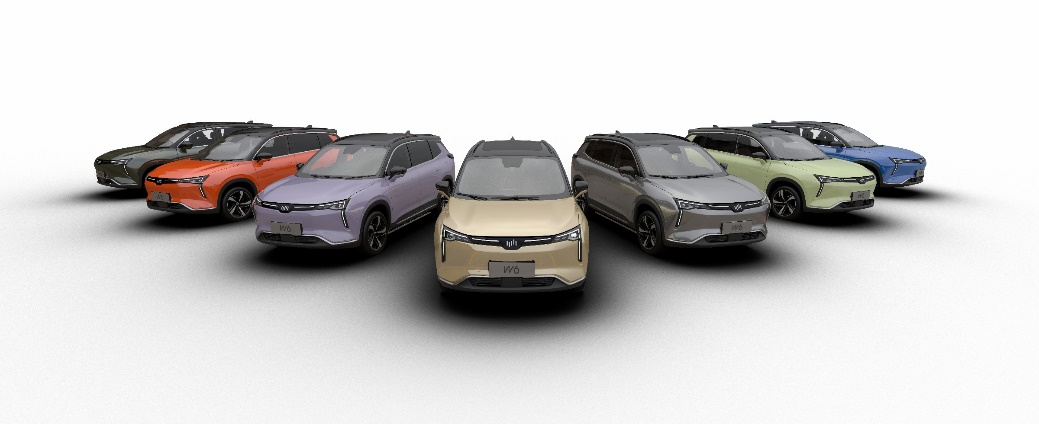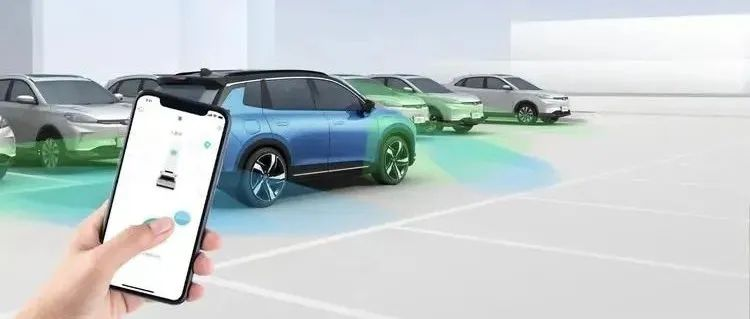Autonomous Parking Is a New Frontier in the Automotive Industry
Autonomous driving has become a new hot topic in the forefront of automotive research. Due to current autonomous driving technology limitations, achieving fully unmanned driving still requires some time. However, the process of parking, which is relatively easy to achieve, has been made possible due to the slow driving speed when parking. On the other hand, parking difficulty has also been a long-standing pain point in the market. According to JD.POWER’s China Consumer Autonomous Driving Confidence Index Survey, parking lot scenarios (i.e., automatic parking) are the scenarios that over 40% of consumers expect to be the first to benefit from the landing of autonomous driving technology.
At present, representative automatic parking technologies include the WmAuto Public Parking Lot Automatic Parking Service (PAVP), which can achieve automatic parking in public parking lots. It was first launched on the WmAuto W6 model and then released to the market through OTA. Let us analyze it further.

What is PAVP?
Traditional automatic parking technology has three routes. One option is the Automatic Parking Assistant (APA). APA is currently the most commonly used technology, which assists the driver in automatic parking through on-board sensors, processors, and control systems. APA is divided into semi-APA and F-APA. The former is semi-automatic APA, which only takes over the lateral guidance system, namely the control of the steering system during the parking process. However, the longitudinal guidance system, such as throttle, brake, and gear, still requires driver operation, making the technology still requiring full driver intervention. F-APA is fully automatic parking assistance. This technology can take over both the lateral guidance system (steering control) and the longitudinal guidance system (throttle, brake, gear, etc.), so the driver can be freed from control, and the automation performance is further enhanced. However, this technology requires the driver to sit in the driver’s seat and monitor at all times.
Another technology is called remote parking assistant (RPA). RPA can allow the driver to leave the driver’s seat and remotely control the vehicle for parking within a certain distance range outside the vehicle using a remote control. It was mainly invented to solve the problem of the driver being unable to open the door and get off the car in narrow areas after parking the vehicle. However, this technology still requires the driver to be near the vehicle for controlling, and its current application is not widespread, only used in a few high-end car series.
The third technology is parking memory parking, which requires the car to record the route in advance, form a memory route and memory parking space, and carry out automatic parking according to the memory. Therefore, this method is more suitable for high-frequency fixed parking spaces and is not suitable for automatic parking in public parking areas.WM has proposed the fourth-generation parking technology, namely Public Automated Valet Parking (PAVP) which is a fully automated valet parking system for public areas, requiring no driver involvement or up-front vehicle learning. It enables remote parking in indoor areas and doesn’t require prior parking route memorization. It can be called a genuine driverless technology.
During use, drivers do not need to enter the parking lot. After alighting, they can control the car through a smartphone app to automatically find a parking space in the parking lot. When the driver needs to use the vehicle, they can summon the car to leave the parking lot through the smartphone app and proceed to the designated pickup point to wait for the driver. Therefore, PAVP has three major features: “driverless”, “no learning required”, and “unlimited distance”.
Of course, WM’s technology only applies to low-speed automatic parking scenarios, and there is still a long way to go from true self-driving cars. But I believe that parking is the best breakthrough for achieving fully automated driving, and it is also the easiest place for major carmakers to make achievements.
Key Elements of PAVP Implementation
Environmental Perception — Sensors
Sensors are the eyes of a car and the foundation of autonomous driving. At present, the main automotive sensors are composed of four core components: in-vehicle cameras, millimeter-wave radar, ultrasonic sensors, and lidar.
In-vehicle cameras, based on image recognition algorithms, are mainly responsible for external image perception and analysis. They play a vital role in the field of autonomous driving sensors and are the “eyes of the car.” They can effectively recognize and classify various objects and pedestrians, but are susceptible to weather and environmental lighting conditions.
Millimeter-wave radar uses 24-300GHz millimeter-wave technology for environment perception, and can work stably under adverse weather or low-light conditions. It can also effectively measure the distance and position of obstacles, but it cannot distinguish between pedestrians and objects.
Ultrasonic sensors determine the distance by emitting and transmitting ultrasound and calculating the time difference. The measurement accuracy is high at low speeds and close distances. Therefore, it is very suitable for use in automatic parking scenes. In addition, ultrasonic sensors are cheap and cost-effective.
Lidar uses Time of Flight (TOF) technology, which emits lasers by scanning, and determines the position of objects by calculating the time difference between emitted and received laser beams when encountering an object. This forms a cloud of laser points that can draw a three-dimensional map for autonomous vehicles. Unlike ultrasonic sensors, lidar has the highest accuracy, and even in long-range surveys, it still performs well. However, it is a newcomer and its technology is still developing and improving gradually, so it is the most expensive and is only used in high-end cars.Due to differences in characteristics among different sensors, the current mainstream approach is to combine these sensors to form a more comprehensive vehicle detection and recognition system.
In the WM (Weima) W6 model with PAVP, 23 sensors are used, including 2 front cameras, 4 surround cameras, 5 millimeter-wave radars, and 12 ultrasonic radars. In addition, there is 1 driving behavior detection camera not used for automatic parking.
I summarized some new automaker brands with cutting-edge automatic parking technology, and it can be seen that WM’s W6 is slightly inferior to other brand models in terms of sensor use, especially in the use of cameras and LIDAR.

Decision-making Behavior — A Million Cloud Computing Capability
The information obtained by the sensors needs further processing based on algorithms to help vehicles improve their decision-making basis. Higher computing power represents faster computing speed and also means that the vehicle’s brainpower is stronger.
Unlike the XPeng P5, which is equipped with an NVIDIA Xavier chip, WM chooses to cooperate with Baidu and rely on cloud servers for computing, with a maximum computing power of 1 million TOPS.
Currently, mainstream vehicles use in-vehicle chips to provide computing power, but the WM W6 takes a different approach, using cloud computing to obtain a higher order of computing power and facilitating subsequent OTA upgrades.

In terms of specific data processing methods, there are slight differences between cloud computing and in-vehicle chips. Taking the XPeng P5 as an example, while sensors are detecting, the chip is performing parallel computing, effectively building feature maps while viewing the surroundings.
On the other hand, WM needs to first record all perceptual data, and then upload it to the Baidu Apollo cloud server, which has a maximum cloud computing capability of 1 million TOPS, providing cloud computing capability for all WM W6 cars. The entire upload, learning, and download process takes about 1 to 2 minutes. In the event of no network connectivity, the WM W6 can rely on the ACU-Advanced vehicle computing platform co-developed by WM and Baidu Apollo for local computing. Additionally, the vehicle is equipped with a Qualcomm Snapdragon 8155 chip, which can provide data processing and computing.According to reports, Baidu entered the autonomous driving market in 2013. Its Apollo autonomous driving platform was initially focused on the field of automatic parking, and the WM W6 was the first model equipped with the platform to land. In addition, Baidu has also invested in WM, with a shareholding ratio of 5.96%.
Path Planning – Baidu Map Engine 5.0
In addition to relying on sensors, the important role of high-precision maps in automatic parking technology cannot be understated, in order to more accurately and comprehensively judge the surrounding environment of the vehicle. Especially for L3 and above autonomous driving technologies applied to the field of automatic parking, high-precision maps are recognized as a must-have, which can significantly improve the robustness of the entire system and reduce the pressure on the vehicle’s perception system.
On the high-definition map, WM once again chose to cooperate with Baidu and equipped it with the Baidu Map Engine 5.0 version. Compared with the previous 3.0 version, its computing power is faster, the localization is more accurate, and the overall performance has been improved. In addition, the map accuracy reaches 15cm, and cross-floor map recognition can be achieved. And through Baidu Cloud, the parking lot information and map data are sent to the vehicle, and the vehicle is helped to make advance scheduling and parking space judgment. The high-definition map and cloud computing support are both equipped in Baidu’s self-developed black box – ACU-Advanced onboard computing platform. It realizes high-precision mapping and positioning, environmental perception, planning and control, data feedback, cloud training, algorithm upgrade and other functions.
Conclusion
In the future, the entire autonomous driving technology development system will revolve around synchronous upgrading development of the vehicle end, cloud end, and roadside end. The WM PAVP technology integrates the five “ends” of the vehicle, cloud, map, scene, and mobile phone. Overall, the WM PAVP system has a significant advantage in the industry and meets the needs and pain points of future users. If there is anything worth optimizing, it is that the placement of sensors, the overall camera of W6 is relatively inadequate. Baidu’s Apollo platform pays close attention to pure visual perception, so the number of cameras may affect its algorithm implementation and final display. We look forward to the models and OTA upgrades that WM will release in the later stage.
This article is a translation by ChatGPT of a Chinese report from 42HOW. If you have any questions about it, please email bd@42how.com.
